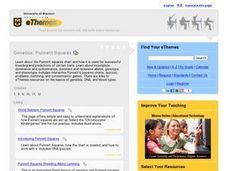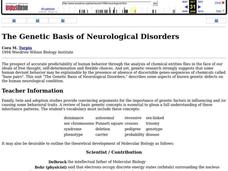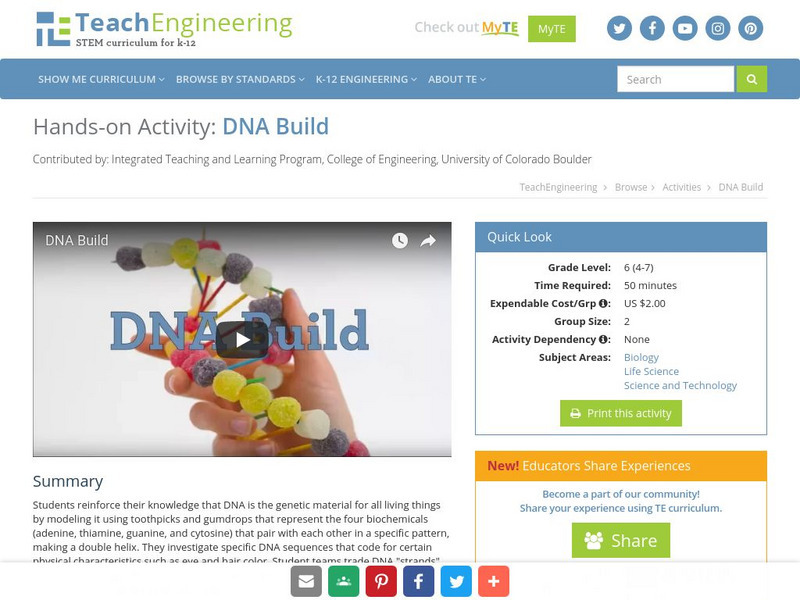Curated OER
Characterization of the Bioluminescence (Lux+) Gene E. coli
Students grow E. coli strain HB101, which contains the plasmid pUCD607 with the bioluminescence (Lux+) gene. The plasmid containing the Lux+ gene is isolated from the E. coli, then characterized by restriction analysis.
Curated OER
Where Are the Dinosaurs?
Students explore the concept of extinction by studying dinosaurs. In this dinosaur lesson, students distinguish between extinct creatures and those that still exist.
Curated OER
Mitosis And Meiosis
In this science worksheet, students answer 15 questions about mitosis and meiosis. For example, "What is a major feature of prophase in mitosis?"
Curated OER
Blood Business
Students identify the different kinds of blood. In this biology instructional activity, students investigate the antigens, agglutinins and Rh factor using their own blood. They use Punnett squares to predict blood type of offspring.
Curated OER
Genetics: Punnett Squares
Pupils examine Punnett squares charts and analyze how they are used for successful breeding and predictions of certain traits. They complete interactive Punnett square charts, quizzes, problems, and concentration games.
Curated OER
The Genetic Basis of Neurological Disorders
Young scholars explore neurological disorders. They examine the presence and absence of discernible genes. Students describe neruological diseases and draw faces of affected persons. They play a human neurology disorders learning game.
Curated OER
Heredity (Mendelian Genetics)
Students observe and record observations of whether a person is a taster or nontaster. They test selected individuals from their families and peer groups and chart all findings to determine which trait (e.g. taster or non-taster) is...
Curated OER
Mitosis and Meiosis Exercise
In this cell division worksheet, students answer 15 multiple choice questions about both mitosis and meiosis. Topics include the outcomes of the processes, the phases of the processes and steps within each process.
Curated OER
The Genetic Basis of Neurological Disorders
Students describe some aspects of known genetic defects on the human neurological condition. They participate in a variety of exercises including drawings, games, and analogies.
City University of New York
Brooklyn College: Genotype and Phenotype
In this informative site, you will find the definition of genotype and phenotype, an explanation of the relationship between genotype and phenotype, an example of a genetic trait, an explanation of the flow of information from DNA to...
TeachEngineering
Teach Engineering: Dna Build
Students reinforce their knowledge that DNA is the genetic material for all living things by modeling it using toothpicks and gumdrops that represent the four biochemicals (adenine, thiamine, guanine, and cytosine) that pair with each...
University of Utah
University of Utah: Learning Center: Learn Genetics:the Outcome of Mutation
Mutation is a process that changes a DNA sequence. But how does a difference in a gene's DNA sequence (or genotype) lead to a difference in an observable trait (or phenotype)?
Science Buddies
Science Buddies: Project Ideas: Rad Radishes: Irradiation on Seed Germination
In this plant biology science fair project, students will investigate effects of irradiation on seed germination. The Science Buddies project ideas are set up consistently beginning with an abstract, objective, and introduction, followed...
Estrella Mountain Community College
Estrella Mountian College: Introduction to Genetics
This site explains genetic beliefs before and after Mendel, and also includes a section on Mendel himself and his experiments, entitled, "The Monk and his Peas".













